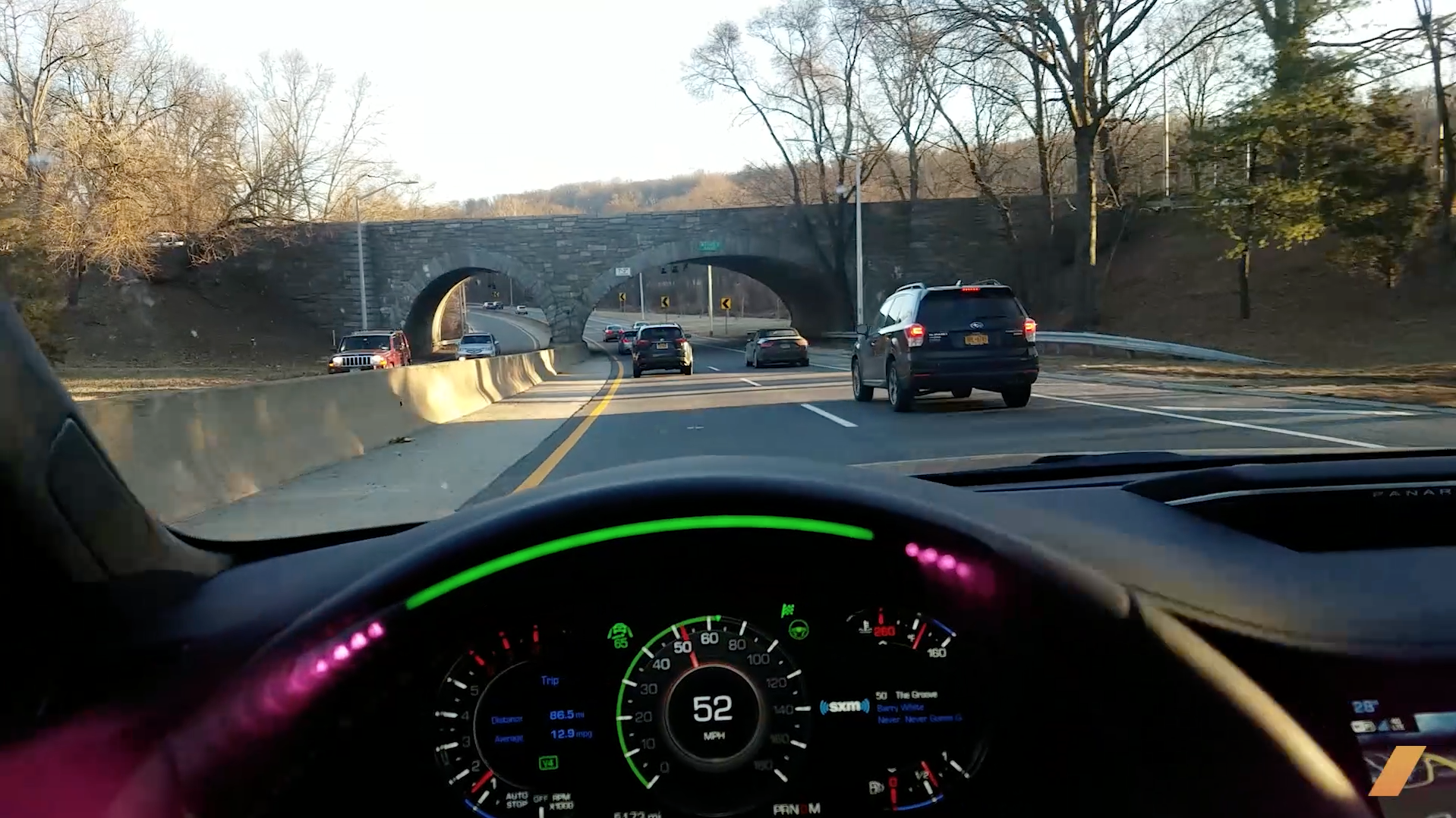

Surveys keep telling us that people are skeptical, or even scared, of self-driving cars. But I’m convinced that it’s only because they’ve never experienced one. In fact, the instant the average consumer sees a self-driving car in action—and how it can free them from the drudgery of an LA-style freeway commute—I suspect they’ll be fully onboard and ready to broadcast the experience on YouTube.
The dangerous aspect of today’s showroom semi-autonomy—drivers lulled into a false sense of security, engaging in cellphone shenanigans instead of paying attention—is exactly why Cadillac’s Super Cruise is such a masterstroke. The CT6 sedan with Super Cruise is expressly designed for hands-free driving. Yet it’s safe and trustworthy, because it’s fully aware of both its own limitations and those of the human behind the wheel.
Like Tesla’s Autopilot, Super Cruise’s radar, camera, and sensor array lets drivers take their hands off the wheel for extended periods, with the car controlling its steering, accelerator, and brakes. On the I-87 freeway north of New York, I sat in the Cadillac CT6’s driver’s seat for about two hours without once touching the steering wheel or pedals. One key to the system’s robust operation is General Motors’s proprietary, Lidar-based mapping of roughly 130,000 miles of major highways in the U.S. and Canada. The CT6 is updated with that detailed map data once per 82 feet of vehicle travel, and that info is combined with onboard sensor data and high-precision GPS.
But as our Alex Roy noted in his head-to-head comparison with Tesla’s competing Autopilot, the Cadillac’s major edge is its Driver Monitoring System. Six infrared emitters in the steering wheel rim illuminate the driver’s face, while a camera and software monitor facial position, eyelid movements, and the focal point of the driver’s pupils. Like a semi-autonomous Santa, the system sees you, and it knows when you’re awake. During my test drive, Super Cruise let me glance away from the road for just under five seconds—plenty of time to, say, adjust the radio station—before the car’s steering wheel rim flashed its disapproval. (One aesthetic note on the test video: The infrared emitters that appear as six purple lights on the steering wheel, three on each side of the longer green bar, are barely visible to the naked eye; the glowing effect you see is created by my cellphone camera. The Cadillac’s wheel doesn’t actually look like a string of Christmas lights.)
Anyway, if I put my eyes back on task within five seconds, I could continue on my merry self-driving way. Unlike every competing system (save Tesla’s), there’s no annoying need to fondle the wheel every few minutes to assure the car you’re still there. But continue to ignore warnings, and Super Cruise clearly informs the driver that he needs to reassert control, and the system disengages. If the driver fails to heed escalating visual, auditory, and sensory warnings (the latter a vibrating driver’s seat) and does not physically take the wheel, the Cadillac will ultimately come to a stop, turn on its hazards, and summon help via its OnStar connection. Hey, you could be having a seizure or something. (Insert Cadillac-Ft. Myer’s-retiree joke here.)
At this juncture of semi-autonomy, that’s exactly what’s demanded. Systems aren’t remotely good enough to let drivers check out completely, whether by texting, watching videos, or getting some shut-eye. So it’s critical that they keep humans in the loop by monitoring that sentient co-pilot and ensuring crystal-clear transitions between automated and human control. Expect GM’s rivals to quickly adopt their own Driver Monitoring Systems, because without one, all the Advanced Driver Assistance Systems hardware and software in the world doesn’t mean squat.
Was it relaxing to drive for two hours without having to physically engage with the car? Hell yes. I eased my seat back a bit farther than usual, though not as far as the pot-smoking comedian in his Tesla. I kept my hands in my lap—or crossed behind my head, to the consternation of some fellow motorists—and chilled to tunes on the Caddy’s 34-speaker Panaray audio system. Self-driving skeptics often remind us how much they love to drive, or how skilled they are at it; they wonder why anyone would want a car to do the work for them. But we’re not (for now) talking about forcing anyone to give up the pleasure of a fast car on a twisty road. We’re talking about often un-pleasurable driving—the kind that’s a numbing chore and a waste of mental and physical energy.
I’m sold on Super Cruise’s ability to reduce fatigue on long drives, including stop-and-go freeway traffic that can wear out the most attentive driver. If GM is smart, they’ll see that Super Cruise gives them a competitive advantage. This Detroit automaker should be shouting from the rooftops, reminding people that Tesla isn’t the only automaker that can introduce useful new technology. GM should also be working overtime to rapidly reduce Super Cruise’s lofty price: It’s a $5,000 option for now, though standard in a CT6 Platinum model. C’mon, GM: this is your chance to own it, to put yourself in the self-driving conversation. Bring the industry’s best and safest semi-autonomous system to the masses, from the priciest Cadillac to the most humble Chevrolet. Best of all? GM could drop those painful “Real People” Chevrolet ads, and use the marketing money to tout something more meaningful than bogus car awards.